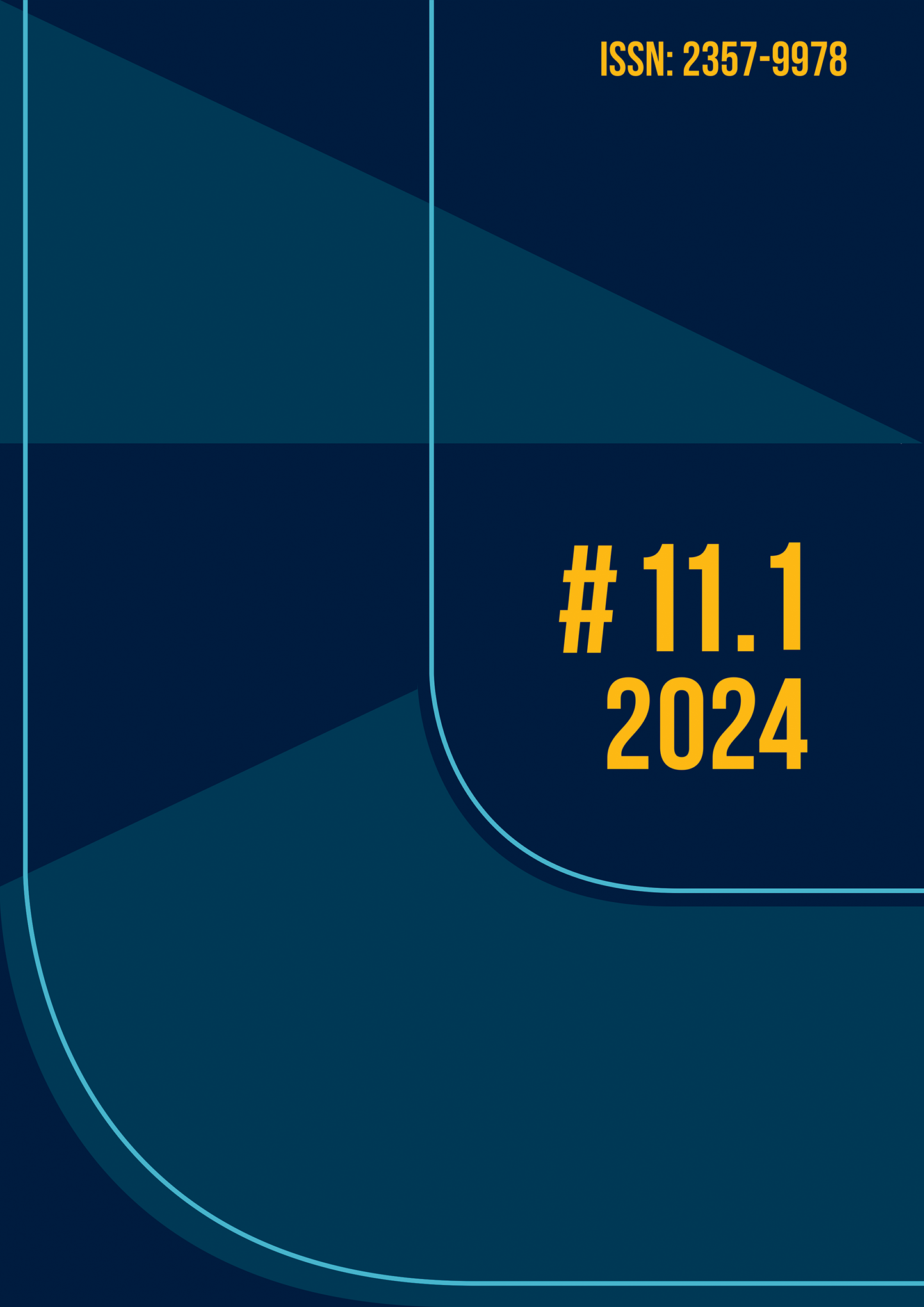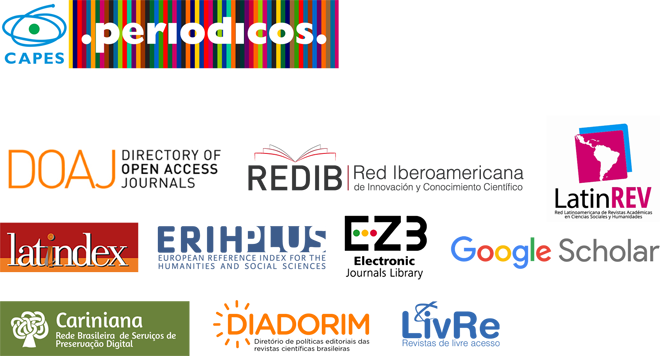Iconografia incorporada: um estudo de caso sobre métodos para recuperação do contexto musical em imagens da capoeira
DOI:
https://doi.org/10.36025/arj.v11i1.33192Palavras-chave:
corpo, iconografia, diáspora africana, movimento humano, capoeiraResumo
Este artigo explora uma abordagem interdisciplinar que integra historiografia, musicologia, iconografia e computação de movimento para investigar as interações entre música, corpo e representação visual. Introduz o conceito de “iconografia incorporada”, que busca interpretar imagens históricas não apenas como documentos visuais, mas como vestígios das dinâmicas corporais e musicais dos contextos em que foram criadas. A partir da análise de posturas corporais em representações iconográficas do século XIX relacionadas à capoeira e sua comparação com gravações de movimento contemporâneas, o estudo revela como os corpos representados nas imagens podem refletir práticas musicais e coreográficas complexas, exibindo as distorções do discurso colonial. Ao relacionar dados históricos e tecnológicos, o estudo destaca a importância dos estudos sobre a corporeidade na reconstrução de contextos culturais e contribui para a descolonização dos estudos historiográficos e musicológicos, oferecendo novas perspectivas sobre as práticas culturais afro-brasileiras.
Downloads
Referências
AGAWU, K. The Invention of “African Rhythm”. Journal of the American Musicological Society, v. 48, n. 3, p. 380-395, 1995.
ALVES, P. M. M. O imaginário escravista em algumas imagens da obra de Debret: possibilidades de leitura. 2020. Dissertação (Mestrado em Antropologia Social) – Universidade Federal de Santa Catarina, Florianópolis, 2020.
ARCANJO, L.; MAXIMIANO, J. A invenção da brasilidade musical: racialização dos aspectos iconográficos da música brasileira. In: CONGRESSO BRASILEIRO DE ICONOGRAFIA MUSICAL, 6., 2021, Salvador. Anais [...]. Campinas: Unicamp, 2021. p. 578-597.
BEARD, D.; GLOAG, K. Musicology: the key concepts. London: Routledge, 2005.
BENJAMIN, W. Sobre o conceito de História: edição crítica. Tradução: Márcio Seligmann-Silva. São Paulo: Alameda Casa Editorial, 2021.
BRAGA, G. G. A capoeira da roda, da ginga no registro e da mandinga na salvaguarda. 2017. Tese (Doutorado em Antropologia Social) – Faculdade de Filosofia, Letras e Ciências Humanas, Universidade de São Paulo, São Paulo, 2017.
BRASIL. Inventário para Registro e Salvaguarda da Capoeira como Patrimônio Cultural do Brasil. Brasília: IPHAN, 2007.
BURKE, P. Testemunha ocular: história e imagem. Bauru: EDUSC, 2004.
CARYBÉ. O Jogo da Capoeira: 24 desenhos. Coleção Recôncavo n. 30. Salvador: Livraria Progresso Editora, 1955.
CHAFFIN, R.; LEMIEUX, A. F.; CHEN, C. “It is Different Each Time I Play”: Variability in Highly Prepared Musical Performance. Music Perception, v. 24, n. 5, p. 455-472, 1 jun. 2007.
COSTA, Thiago; DIENER, Pablo. O Brasil Pitoresco de Debret. Polifonia, Cuiabá, v. 20, n. 28, p. 172-188, jul./dez., p.173, 2013.
DIDI-HUBERMAN, G. Diante do tempo: história da arte e anacronismo das imagens. Belo Horizonte: Editora UFMG, 2015.
FERREIRA, M. F. Dança, caboclo, cada qual em seu lugar! Estudo sobre os movimentos corporais e a patrimonialização da Dança dos Caboclinhos – Peçanha/MG. Orientador: Luiz Naveda. 2021. Dissertação (Mestrado) – Universidade do Estado de Minas Gerais, Belo Horizonte, 2021.
GALANTE, R. B. F. Da cupópia da cuíca: a diáspora dos tambores centro-africanos de fricção e a formação das musicalidades do Atlântico Negro (Sécs. XIX e XX). 2015. Tese (Doutorado) – Universidade de São Paulo, São Paulo, 2015.
GINZBURG, C. Mitos, emblemas, sinais: morfologia e história. São Paulo: Companhia das Letras, 1990.
GOMBRICH, E. H. Aims and limits of iconology. In: GOMBRICH, E. H. Symbolic images: Studies in the Art of the Renaissance. London: Phaidon, 1972. p. 1-25.
GONZAGA, G. G. Augustus Earle: pintor viajante – cenas de gênero e paisagens brasileiras. In: COLÓQUIO DO COMITÊ BRASILEIRO DE HISTÓRIA DA ARTE, XXXIV, 2014, Uberlândia. Anais [...]. Uberlândia: Universidade Federal de Uberlândia, 2014. p. 121–136.
GOODALL, C. Procrustes methods in the statistical analysis of shape. Journal of the Royal Statistical Society, Series B (Methodological), v. 53, n. 2, p. 285–339, 1991.
HARTOG, F. Regimes de historicidade: presentismo e experiências do tempo. Belo Horizonte: Autêntica, 2013.
LARRAÍN, N. R. S. Capoeira Angola: música e dança. 2005. Dissertação (Mestrado) – Universidade Federal da Bahia, Salvador, 2005.
LEMAN, M. Music Research at the crossroads of innovation. In: PENA, D. (ed.). Themes in transdisciplinary research. Belo Horizonte: IEAT-UFMG, 2010.
MAPAYA, M. G.; MUGOVHANI, N. G. Musicologia comum Africana: uma epistemologia musical de perspectiva Africana. Claves, v. 9, n. 14, p. 79-98, 2020.
MASON, P. H. Intracultural and Intercultural Dynamics of Capoeira Training in Brazil. Global Ethnographic, v. 1, p. 1-8, 2013.
NAVEDA, L. Pose: A software for annotation of tridimensional body postures in bidimensional images. Belo Horizonte: Universidade do Estado de Minas Gerais, 2022. Disponível em: https://corpuslab.info/pose.
NZEWI, M.; FREIRE, K; GRAEFF, M. Por uma musicologia “verdadeiramente” africana-brasileira: entrevista com Meki Nzewi. Claves, v. 9, n. 14, p. 116-135, 2020.
OLIVEIRA, A. S. de. Sankofa: a circulação dos provérbios africanos: oralidade, escrita, imagens e imaginários. 2016. Dissertação (Mestrado em Comunicação) – Brasília: Faculdade de Comunicação, Universidade de Brasília, 2016.
PARNCUTT, R. Musicologia Sistemática: a história e o futuro do ensino acadêmico musical no ocidente. Em Pauta, v. 20, n. 34/35, p. 145-185, 2012.
PASTINHA, V. F. Capoeira Angola. Salvador: Fundação Cultural do Estado da Bahia, 1964.
RUGENDAS, J. M. Viagem pitoresca através do Brasil. Belo Horizonte: Itatiaia, 1998.
SCHWARCZ, L. O sol do Brasil: Nicolas Antoine Taunay e as desventuras artísticas dos artistas franceses na corte de D. João. São Paulo: Companhia das Letras, 2008.
SOTUYO BLANCO, P.; DA SILVA FILHO, W. M. Tema y variaciones en la iconografía musical mariana: del estudio de caso a la integración informacional iconográfica iberoamericana. Cuadernos de Iconografía Musical, v. 1, n. 1, 2014.
STERGIOU, N. Variability in Life Can Facilitate Learning to Live Together. In: KELSO, J. A. Scott (ed.). Learning To Live Together: Promoting Social Harmony. Cham: Springer, 2018. p. 65–69.
TOIVIAINEN, P.; BURGER, B. MoCap Toolbox Manual. Jyväskylä, Finland: University of Jyväskylä, 2011.
WICHERS, C. M. Sociomuseologia e arqueologia pós-processual: conexões no contexto brasileiro contemporâneo. Cadernos de Sociomuseologia, v. 51, n. 7, 2016.
WITTENBURG, P. et al. ELAN : a professional framework for multimodality research. In: 5TH INTERNATIONAL CONFERENCE ON LANGUAGE RESOURCES AND EVALUATION (LREC 2006). 2006. Disponível em: https://pure.mpg.de/pubman/faces/ViewItemOverviewPage.jsp?itemId=item_60436. Acesso em: 20 fev. 2019
Downloads
Publicado
Como Citar
Edição
Seção
Licença
Copyright (c) 2024 Luiz Naveda, Loque Arcanjo (Autor)

Este trabalho está licenciado sob uma licença Creative Commons Attribution-NonCommercial-ShareAlike 4.0 International License.

Esta obra está licenciada com uma Licença Creative Commons Atribuição-NãoComercial-CompartilhaIgual 4.0 Internacional.
Autores detêm os direitos autorais ao licenciar sua produção sob Creative Commons Atribuição-NãoComercial-CompartilhaIgual 4.0 Internacional.


 English
English Português (Brasil)
Português (Brasil)
